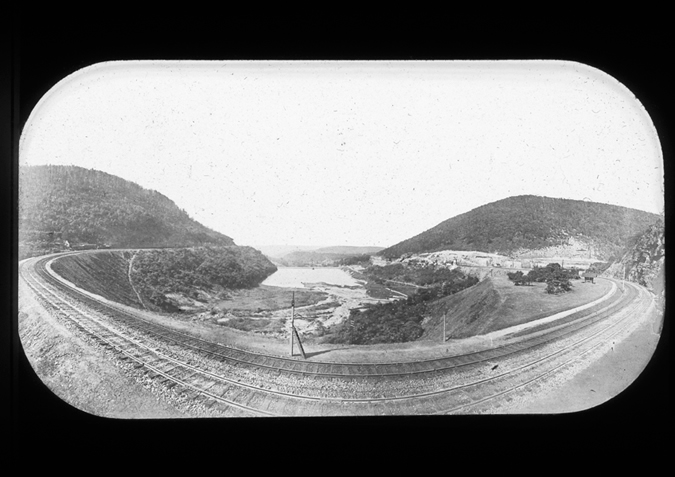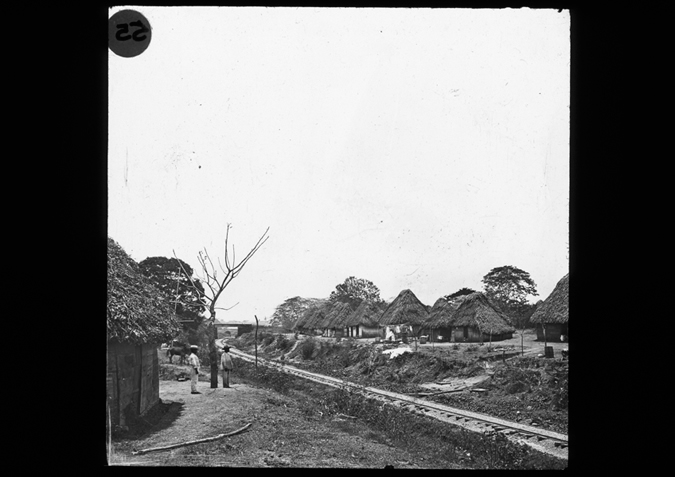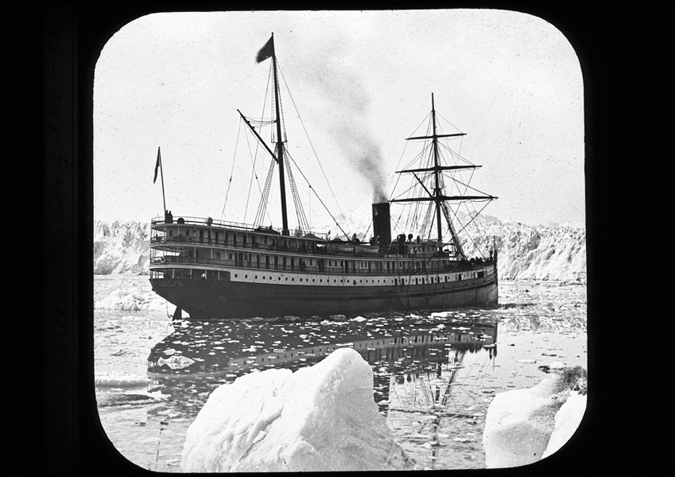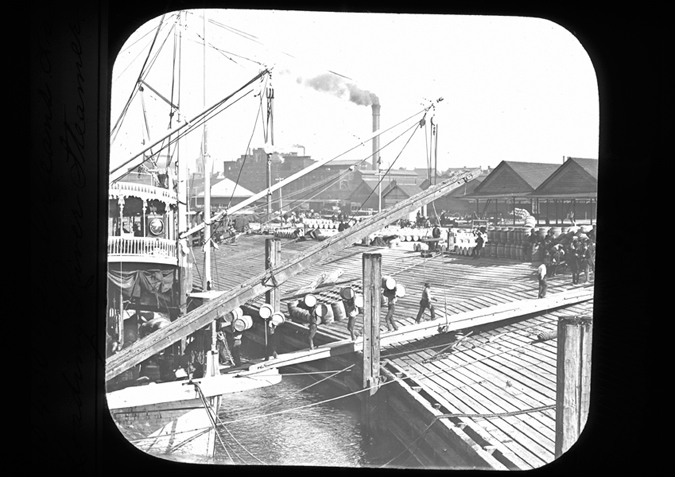Over his lifetime, Muybridge photographed newly developed forms of transport - including railroads and steamships - which were an extremely important signifier of modern life in the West.
The first American trade railroad opened in 1828 with the first passenger service following a year later. Therefore, in Muybridge's time trains were still a great novelty and excitement. They revolutionised trade throughout America by allowing the transportation of goods over long distances, and boosted the economy of towns and villages along trade routes by connecting them to bigger cities and the coast.
Furthermore, both trade and passenger trains thrilled the American population with their speed, which actually seemed to annihilate space itself. As Rebecca Solnit states: 'if distance was measured in time, then the world suddenly seemed to shrink; places connected by railroads were several times closer to each other than they ever had been' (2003, p9).
Muybridge photographed railroads across America throughout his career, including tracks in Maine, Pittsburgh, Canada and Central America. However, by far the most culturally significant rail photographs taken by Muybridge were the Central and Union Pacific tracks. These were photographed in 1873 in an opportunity provided by Leland Stanford: an entrepreneur, close associate of Muybridge and president of the Central Pacific Railroad itself.
The Central and Union Pacific railroads were joined on May 10th 1869 at the Driving of the Golden Spike at Promontory Point Utah, after months of work carried out by Chinese and Irish Immigrants, and ex-union soldiers (Solnit, p57). This monumental moment created the Transcontinental Railroad, which connected the Atlantic and Pacific coasts of America for the first time, proving how far railroads had come in just 40 years, and just what the USA was capable of!
And it was another extremely progressive invention of the time, the telegraph, which allowed a nationwide celebration of the event. When Stanford drove the final spike, it was wired to send out a telegraph message across America. This was 'the first live national media event' (Solnit, p58) and began celebrations in all major cities.
Steamships were developed earlier than rail in 1807. However, they were used throughout the 19th century to achieve on water what rail did on land: enabling trade and passenger travel to occur with increasing speed and ease both nationally and internationally. Muybridge photographed steamships which were used for both these ends, as we can see pictured above.
The river boat pictured here is a Mississippi paddle steamer. These steamers were used nationally to enable trade to penetrate deep into the continent, something which aided the development of both port towns and river settlements exponentially throughout the 19th Century. The larger steamship pictured here - a photograph taken in Alaska and attributed to Muybridge - would have been better equipped for long distance travel and trade. These larger steamships allowed goods and passengers to be transported around the world far more efficiently; particularly after the development of other 19th century inventions such as lightweight steel hulls, combustion engines and refrigeration devices to keep food fresh.
Steam then, truly revolutionised travel and trade by both land and sea. It was extremely important to America not only in a national sense, but also internationally in terms of keeping up with the growth of capitalism and trade with other countries. Indeed, it would fast become an imperative for the economic prosperity of nations around the world.
And Eadweard Muybridge was present once again to photograph these monumental inventions and developments in mechanisation throughout the 19th Century. In so doing, he photographed some of the tools most instrumental in building America into the superpower it is today, and helped provide us with visual documentation of this journey in itself.
Select Bibliography
Haas, Robert Muybridge Man in Motion (Berkeley, University of California Press, 1976)
Solnit, Rebecca Motion Studies: Time, Space and Eadweard Muybridge (UK, Bloomsbury, 2003)
Rogers Taylor, George. The Transportation Revolution, 1815-1860 Economic History of the United States (New York : Rinehart & Co., 1951)





 Introducing Muybridge
Introducing Muybridge Landscape
Landscape The Modern City
The Modern City Transport and Trade
Transport and Trade Foreign Bodies
Foreign Bodies Animal in Motion
Animal in Motion Human Figure in Motion
Human Figure in Motion Zoöpraxography
Zoöpraxography